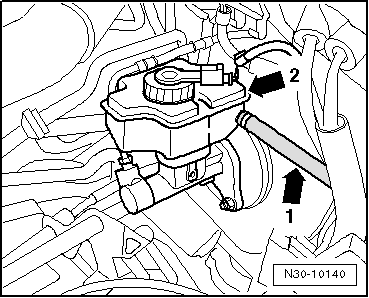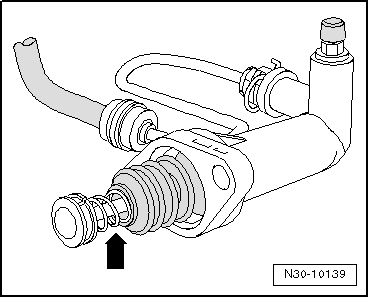| t
| The clutch hydraulic is connected to one of the chambers -arrow 2- of the brake fluid reservoir by the return hose -arrow 1-. |
| t
| If there is no or little brake fluid in this chamber, there is a leak in the system. |
| t
| Symptoms of an external leak are, amongst others, traces of brake fluid on or below the gearbox, as well as on the noise insulation under the gearbox. |
| t
| Check the correct routing of the tube-hose line between the master and slave cylinder. The line must not be kinked or trapped. |
| t
| The brake pedal return must not be obstructed by moved or additional covers (floor coverings). |
| Inspect the complete hydraulic system for leaks. |
| t
| Check brake fluid level in the brake fluid reservoir |
| t
| Return hose between brake fluid reservoir and master cylinder |
| t
| Tube-hose line between master and slave cylinder |
| t
| Connection points (plug and screw connections) also in a non-visible area |
|
|

|



